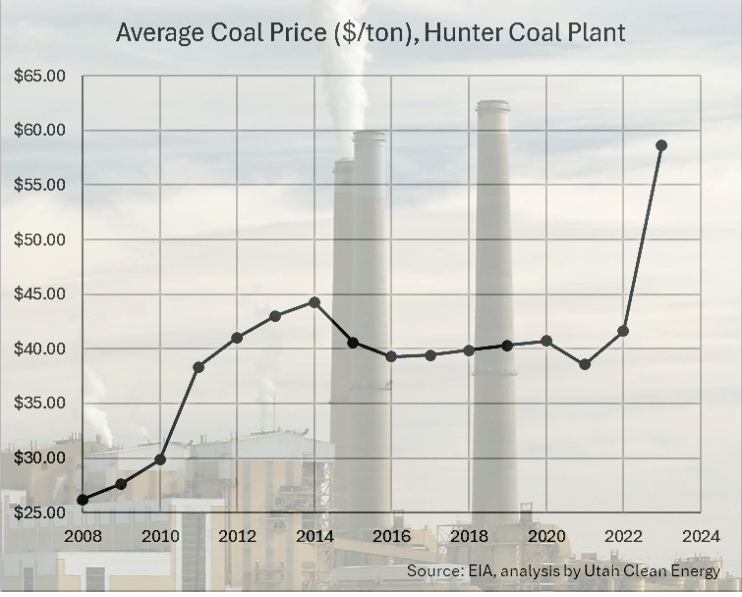Utah’s largest utility, Rocky Mountain Power, recently proposed a 30.6% increase in electricity rates over two years. If approved, the change will increase the average customer’s bill by more than $24 a month by 2026. The proposal follows the utility’s announcement that it will delay much of its previously planned development of new wind, solar, and battery resources, opting instead to maintain aging and costly coal plants.
Rising Costs of Fossil Fuels and Climate Change
Utah Clean Energy’s experts, along with several others, have analyzed Rocky Mountain Power’s proposal finding that an over-reliance on fossil fuels and costs related to climate change are significant factors behind the requested rate hikes. While this is a large, complex utility docket that will be debated before the Utah Public Service Commission over the coming months, the potential to curb rising electricity costs through clean energy is a pathway that needs extra attention.
Rocky Mountain Power’s testimony to the Public Service Commission makes it clear: citing the rising costs and fragile supply chains of fossil fuels combined with climate change impacts are the primary drivers of the proposed rate increase. Some of the biggest factors involved are the Lila Canyon coal mine catching on fire requiring major and costly efforts to plug that gap, as well as Russia’s invasion of Ukraine causing spikes in global natural gas and coal prices. On top of that, climate costs have come home to roost in the form of spiking wildfire insurance premiums, costly wildfire litigation, and climate mitigation efforts to harden the grid against wildfires.

Clean Energy Can Help Protect Against Rising Energy Prices
Investments in electric transmission and grid modernization play a role in the increase. However, the utility notes in their filing that the addition of transmission and wind energy is also helping to offset other potential increases. Unlike fossil fuels, clean energy sources such as wind and solar do not require fuel that can have volatile price changes, so they ensure secure, stable energy prices for customers.
“It’s important to recognize investment does have costs…we’re investing in wind and transmission, those are costs as well, but they’re the most important mitigating factor for volatile fuel prices…because we haven’t been investing as much over the prior years, that’s really created this exposure to volatile fuel prices.”
Dr. Logan Mitchell, Utah Clean Energy’s Climate Scientist and Energy Analyst as featured in the Deseret News






